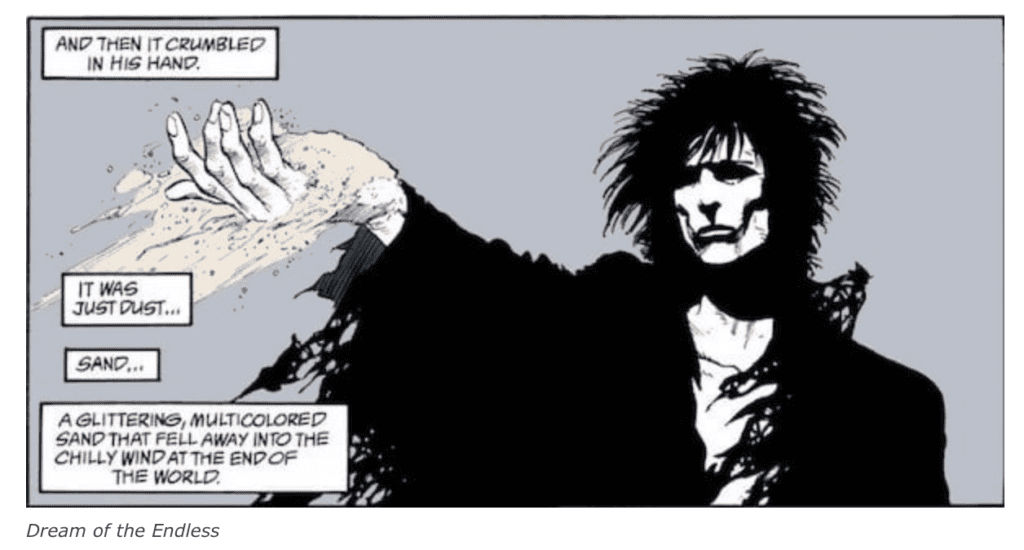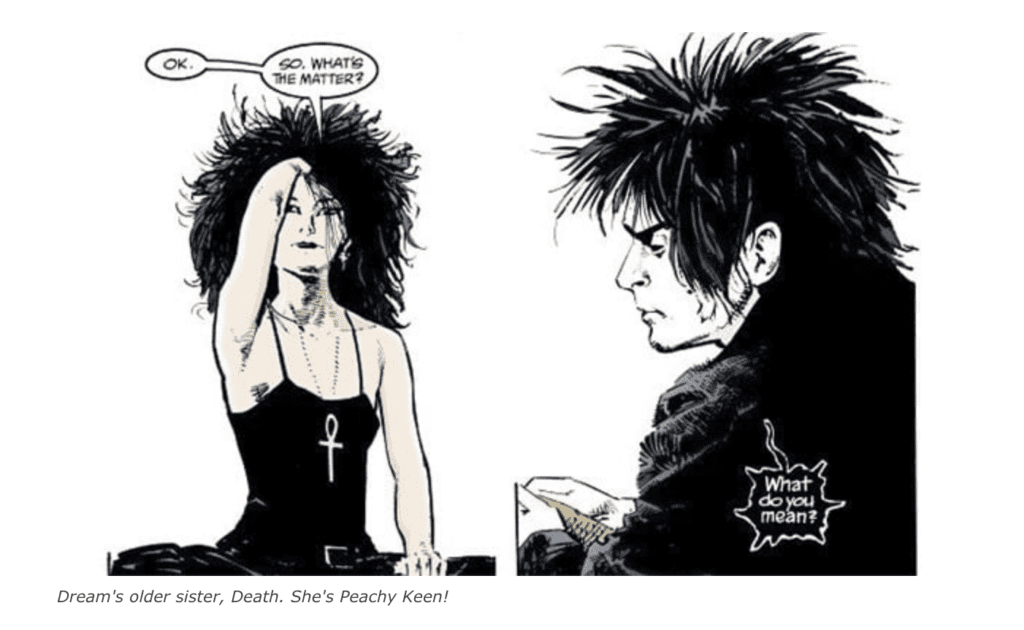After being drawn into comics by superheroes, Neil Gaiman’s Sandman showed me how much more the medium had to offer.
When I first started reading comics, I did not have any real preconceptions as to what they were (or were not) capable of as a medium. I never thought of them being just for superheroes, as posters of stories like Saga and Y: The Last Man had already told me otherwise. Though every time I looked around at recommendations for the so-called “best” comics to read, the title Sandman by renowned fantasy author Neil Gaiman popped up. It wouldn’t be for another couple years after I had gotten into comics before I made the gamble and scooped up the first omnibus volume. It was not until I broke in the spine and sat down to read issue number 1, “The Sleep of the Just,” that I realized what comics were truly capable of as a medium.

In the beginning, Sandman has the tone and appearance of a sophisticated horror comic. DC’s Vertigo imprint has (er, had) its fair share of such stories, from Alan Moore’s Saga of the Swamp Thing to The Hellblazer. However, Gaiman quickly sets his story apart from its contemporaries with the scale of the story he chooses to tell. Dream of the Endless, a.k.a Morpheus, a.k.a. The Sandman is the physical and ethereal embodiment of dreams. He is the patron saint of stories. He has existed since the first living thing in the universe fell asleep and will continue to do so until after the last one passes on. His family, “The Endless,” are all manifestations of universal concepts (Destiny, Death, Destruction, Desire, Despair, and Delirium). Gaiman’s 75-issue tale gets to know every facet of Dream’s job as the keeper of dreams and his relationship to his family, all while running a full spectrum of genres. Where one arc maybe a dark horror story, the next issue could easily be a high-fantasy tale, followed by a comedic commentary on Shakespeare’s plays. Yet it never skips a beat.
Sandman’s narrative swerves from the main continuous story-arcs that contain Dream’s “current” story to flashbacks and anecdotal one-shots. Several of the stories do not even have Dream as a character, and instead feature other minor characters in semi-related stories of their own. One such story-arc is about a motley group of characters all staying at an inn and swapping fantastic tall-tales. Since Dream is the literal embodiment of storytelling, he’s by extension included in this arc even if he doesn’t make an actual appearance.

Despite how odd Sandman’s structure may be, it never gets overwhelming or confusing. Gaiman’s ability to tell such a wide range of far-reaching tales and make the whole story wrap-up into itself is what makes Dream’s story so memorable. It’s also where I realized how special the comics medium really was. Unimaginable concepts are brought to life in a massive variety of art styles. Gaiman’s poetic prose is blended with the varied dialogue of a cast of dozens. The fact that this sort of story told over 7-years and 75-issues makes a cohesive whole with such craft is what sold me on what comics can really be. I had never thought of comics being such a different medium than novels or film. I had never thought of the idea that there are stories that can only be told in a comic, as they were too imaginative for novels or too massive in scope for television and movies. Since reading Sandman, I’ve noticed its influence through a similar style of narration in other comics. Sandman is high-art in a comic book. It’s one of the most imaginative pieces of fiction of the 20th century, and it’s what made me realize what exactly comics were capable of.


